In January, some of our staff participated in important conservation efforts to survey the Mexican wolf population in the wild.
The main goal? To see if the population for this endangered wolf is growing. For our team, we were hoping to learn whether or not our cross-foster efforts of the 2019 season were successful.
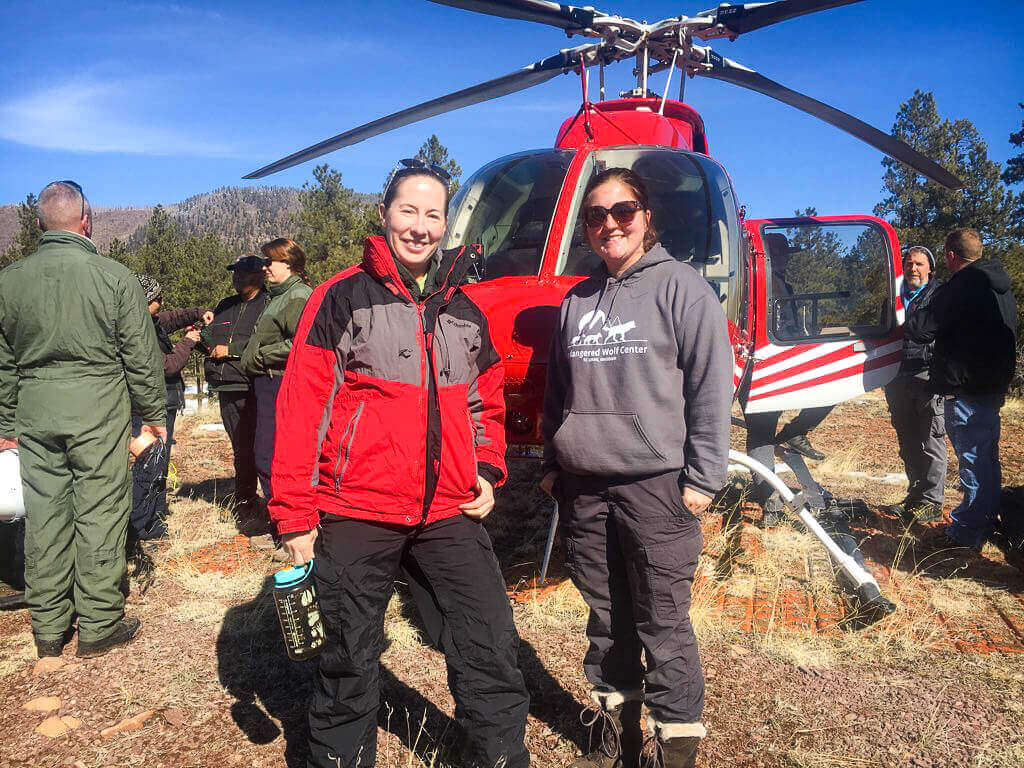
Regina Mossotti (left) and Rachel Crosby (right) with the Interagency Field Team (IFT) as the IFT prepares to do an aerial survey of the Mexican wolf population in New Mexico and Arizona.
Regina Mossotti, Director of Animal Care and Conservation at the Endangered Wolf Center, shares a highlight of their journey:
“On the 3rd day of the survey, an uncollared, unidentified male Mexican wolf was darted, captured, and brought to the processing team to check for a microchip. We were excited when we heard the microchip reader “bing” because we knew he was a fostered pup.
We discovered that it was Max, one of the pups born at the Endangered Wolf Center and fostered with his four brothers and sisters into the Freiborn Pack in New Mexico. To see in person that this groundbreaking foster effort was successful and that he was healthy and thriving adult in the wild was an incredible moment.
The collaboration between U.S. Fish and Wildlife Services (USFWS), Interagency Field Team, and the Mexican Wolf Species Survival Plan (Mexican Wolf SSP) is making an impact and helping to save this critically endangered wolf – working together is what it’s all about.”
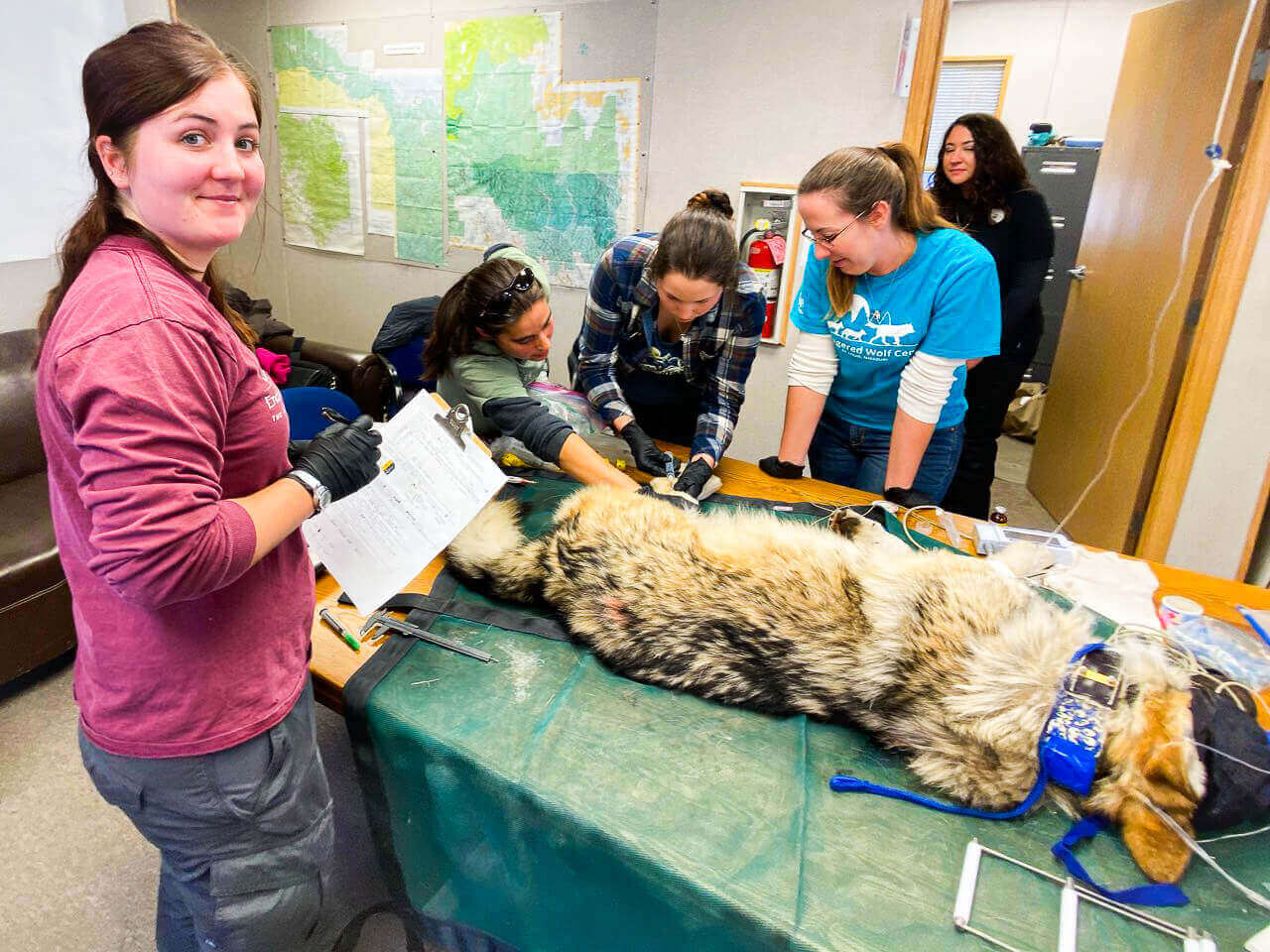
Rachel Crosby (left) with Alison Greenleaf (FWS-middle) and Regina Mossotti (right) with a sedated Mexican wolf. The team is drawing blood to determine the genetics and health of the wolf.
During the survey, wolves are tranquilized, examined for health assessments, and collared. The collar helps to track and learn about the wolves so that we can ensure that the conservation efforts are working.
We are proud of our collaborative efforts to save this species. As the saying goes, “It takes a village”. Saving species requires innovation, collaboration, and dedication – and lots of it.
History of Mexican Wolf Conservation
Mexican wolves are the most genetically distinct and the smallest subspecies of gray wolf. They are also the most critically endangered subspecies of gray wolf in the world.
The last Mexican wolves were brought in from the wild in the late 1970s to start a captive breeding program (which would later become the Mexican Wolf SSP.)
Re-introduction to the wild began in 1998 with the release of 11 Mexican wolves in the Blue Range Wolf Recovery Area (BRWRA) along the border of Arizona and New Mexico. Since then, USFWS has performed the annual helicopter survey to monitor and evaluate the population.
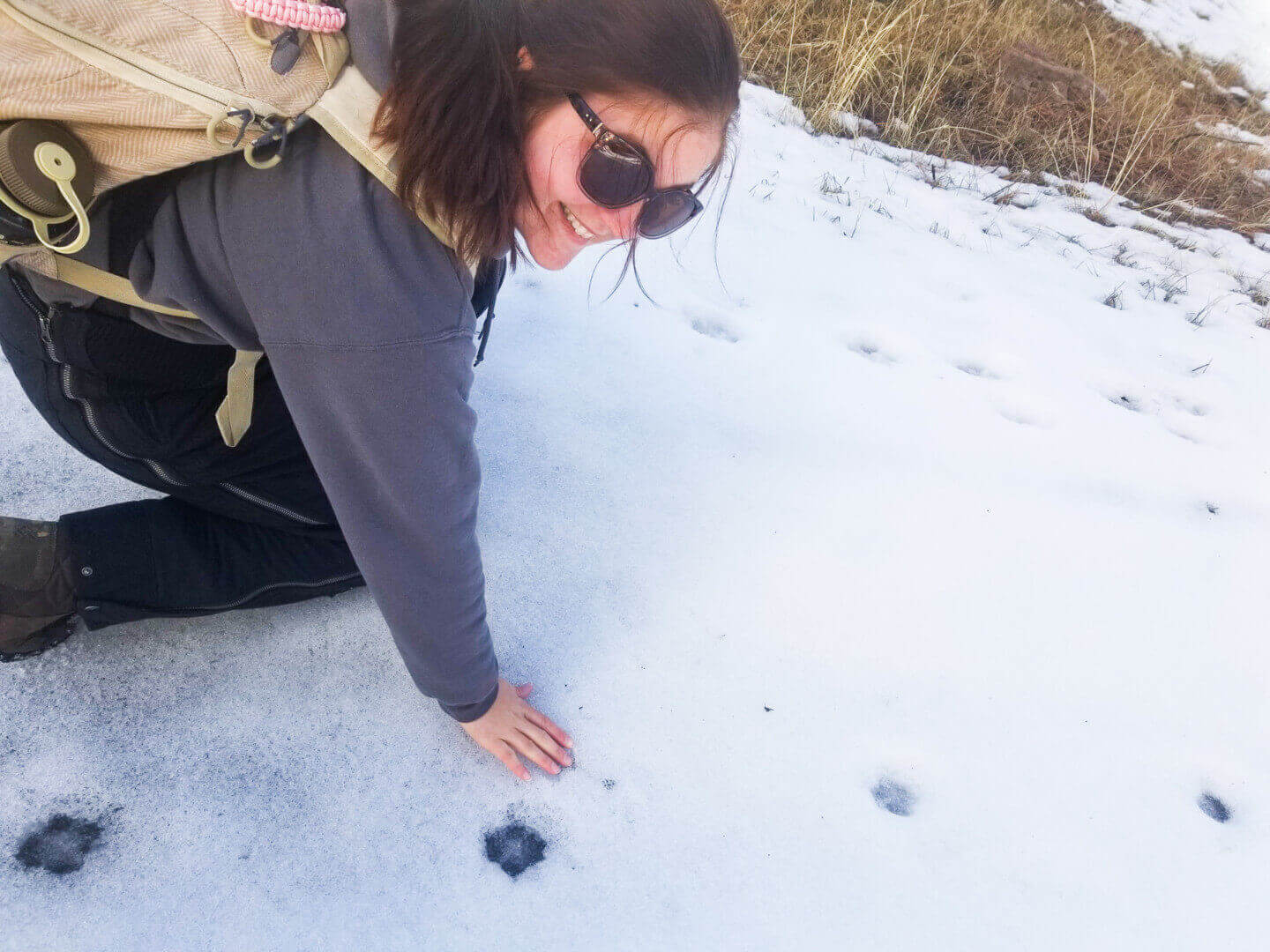
Rachel Crosby tracking wild Mexican wolves in the Gila National Forest.
Innovation to Save Species
In 2015, the Endangered Wolf Center worked with the USFWS team to implement cross-fostering of captive-born pups to the wild as part of a new, innovative way to aid the Mexican Wolf Recovery Program.
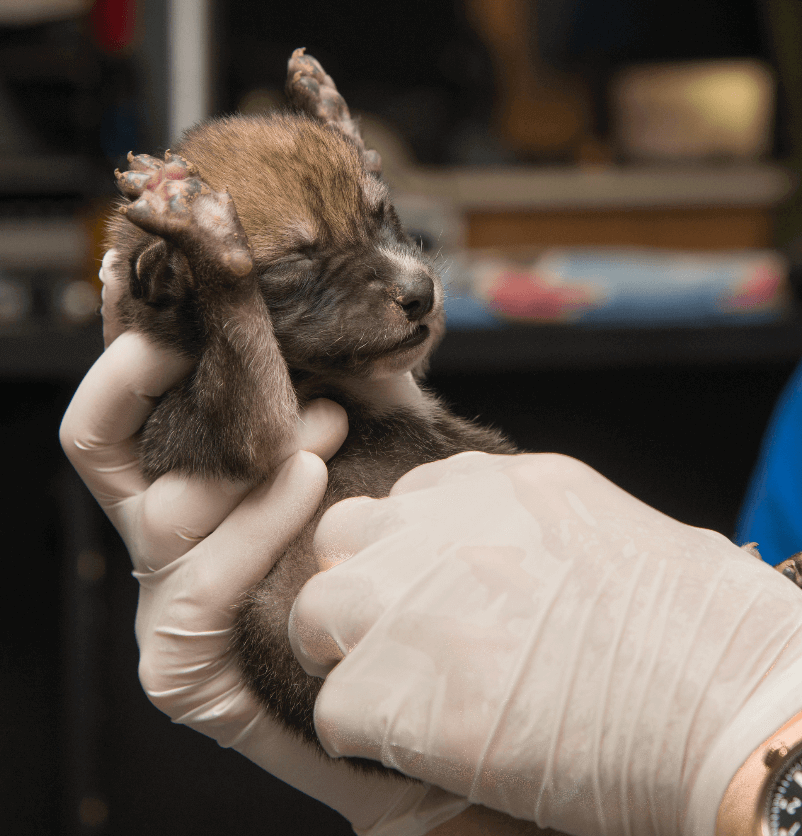
Raise the roof – I get to grow up WILD!
Fostering is a technique where wolf pups from one litter are placed with another litter. The wolf mother will adopt the new, little additions as her own.
The result?
This technique not only increases the population size in the wild but also increases genetic diversity.
For small endangered species populations, genetic diversity is a critical part of the conservation strategy to ensure the animals are healthy.
Fostering is also a wonderful way to have experienced wild parents raise and teach the pups the skills needed to survive (i.e. how to stay away from people, how to hunt, how to protect their territory, etc.).
After all, it’s hard to be wild!
In 2016, the first successful captive-born pups fostered into a wild litter was performed by EWC staff. Since then, 30 (18 from the EWC) pups born in the captive population have been fostered into the wild.
In 2019, a wild wolf parent that was once a fostered pup (born at Brookfield Zoo) grew up to become the alpha male of the Prime Canyon Pack in the wild and is now parenting his own foster pup.
Regina Mossotti also assists other SSP organizations fostering pups from their facility into the wild by serving as the USFWS/MW SSP Pup Foster Advisor.
Cross-fostering is truly a win-win!
This year’s annual survey was especially rewarding for our staff because they saw that Max not only survived to adulthood, but he is healthy and became an alpha with a female forming his own pack.
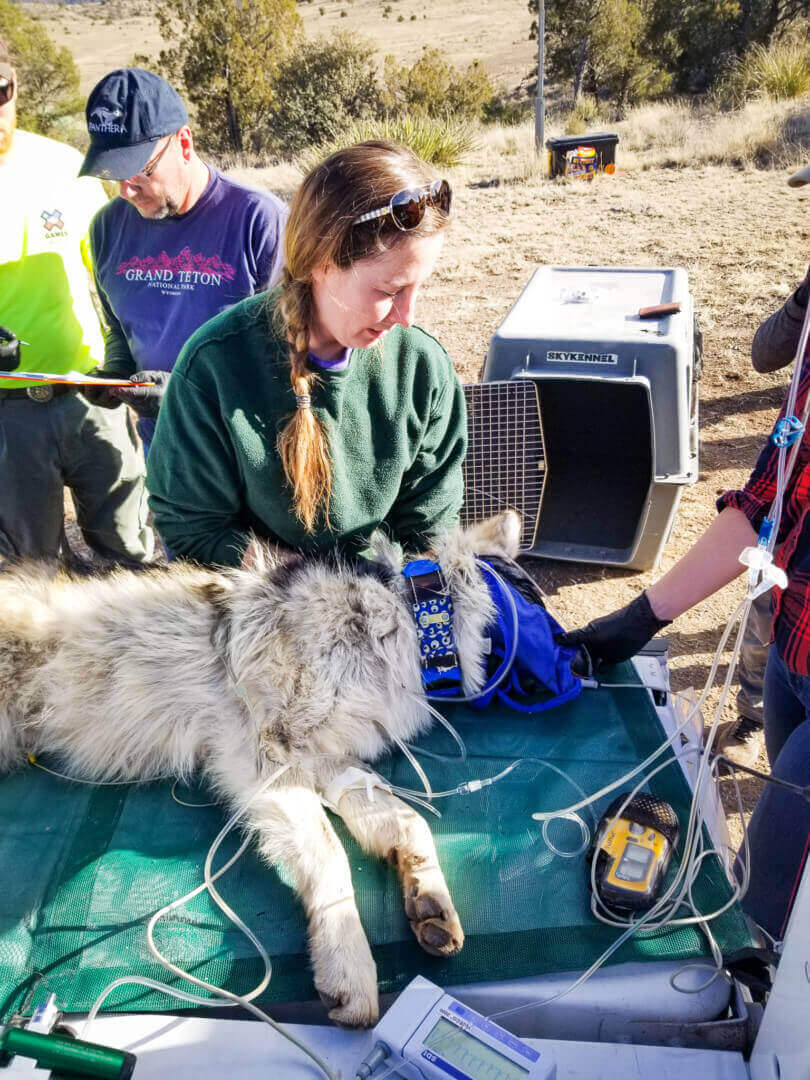
Regina Mossotti with Max, after they read his microchip and discovered that he is a pup cross-fostered into the wild from the Endangered Wolf Center.
Yes, there were many happy tears shed.
Survey Results Are In – Good News from the Wild in 2019
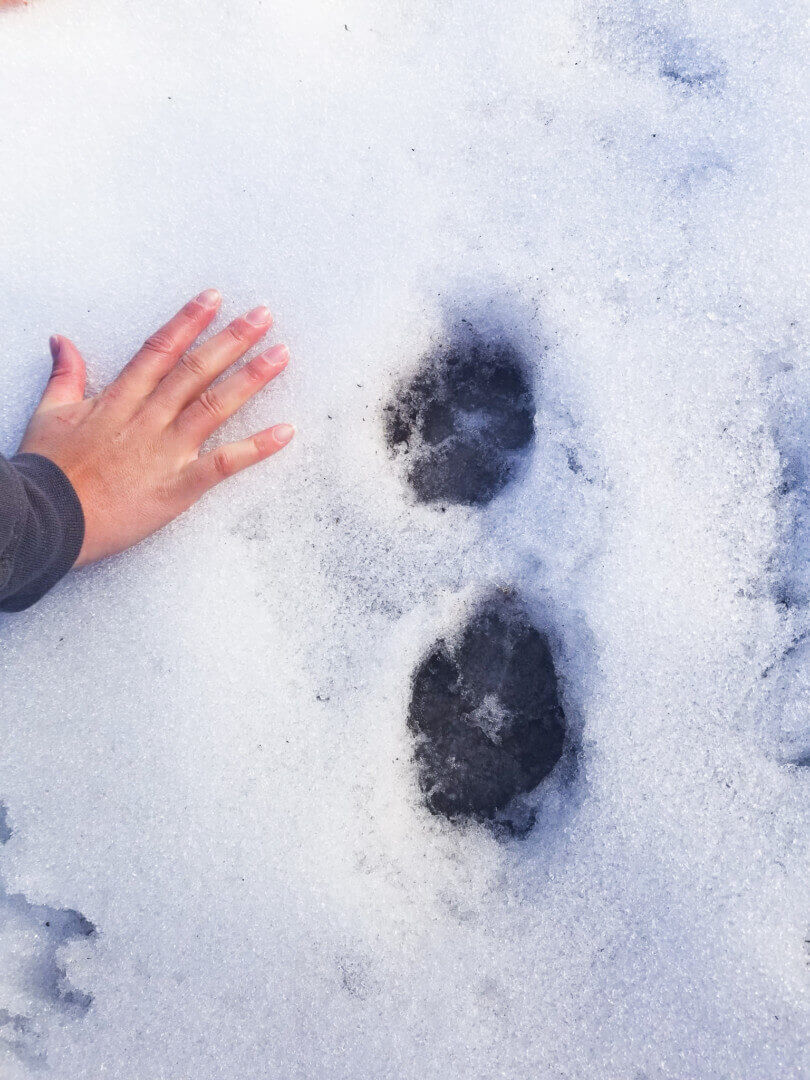
Wild Mexican wolf paw prints in the Gila National Forest in New Mexico.
FWS published on fws.gov that “Mexican wolf count shows the population of Mexican wolves has increased by 24% since last year, raising the total number of wolves in the wild to a minimum of 163 animals.”
While there is still much work to be done to conserve the Mexican wolf, these survey results bring inspiration and hope to a species that is truly coming back from the brink of extinction.
As we continue to gather data and experience with this innovative conservation technique, we hope these “tails” of success can impact the conservation of other critically endangered species, like the American red wolf, in the future.
Become a Wildlife Hero
Want to get involved to save Mexican wolves? Join our pack!
When you symbolically adopt our pack of Mexican wolves, we’ll keep you PUPdated on any births and cross fosters into the wild.
You will make a direct impact on conservation and truly become a wildlife hero, helping us continue these innovative and historic conservation efforts.